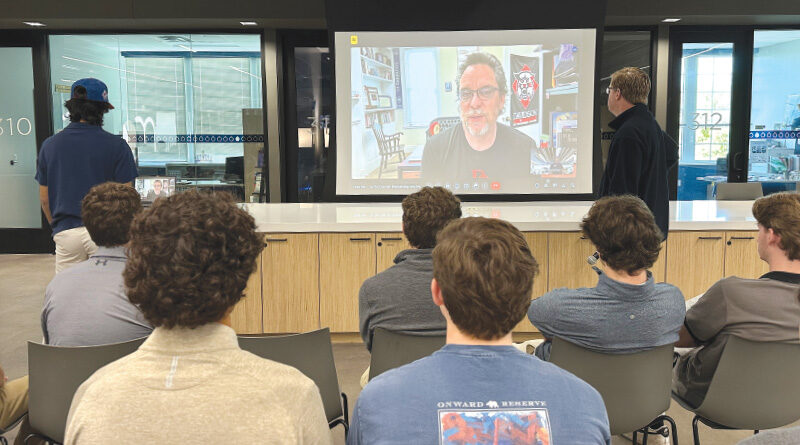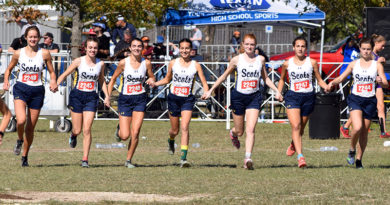Cracking the Code for March Madness
HPHS students get bracketology insights from mathematician Tim Chartier
By Austin Chatterton and Landry Saylor
Amidst the Madness of March, one question remains: Why is it so hard to get a perfect bracket?
Enter professor Tim Chartier from Davidson College. He specializes in mathematics, computer science, and, most notably, sports analytics.
With professional collaborations spanning the NFL, NASCAR, NBA, ESPN, and more, Chartier captivated the HPHS Sports Analytics students in March with his proven insights into March Madness.
Chartier, a “data analytics celebrity,” is one of the true pioneers in Sports Analytics education at the collegiate level and has appeared in USA Today, The New York Times, Bloomberg TV, NPR, and the CBS Evening News. His past students hold many coveted positions throughout the sports industry.
Analytics isn’t just a tool; it’s a game changer that can be used to improve performance across all sports, Chartier said. It is particularly valuable “in game preparation and how and what to practice.”
Chartier also advocates using analytics to better integrate new technology into sports. In a study he conducted with his students on the actual safety provided by football helmets, his team demonstrated that players were more effective at keeping their heads up while tackling during practice than during a game. The crown of the instrumented helmet registered far more direct impacts in game situations than in practice — an important insight that coaches can use to help reduce brain injuries.
Chartier is often called upon to talk about bracketology each March before the NCAA Basketball Tournament. The dream of filling out the perfect bracket is truly daunting, with odds of 1 in 9.2 quintillion.
To put that into perspective, “If you were to fill out a new bracket every second, it would take over 300 years to complete all the different possible combinations,” Chartier said.
“The goal isn’t to be perfect because, in the end, it’s impossible. The goal is to be better than everyone else.”
He advises aspiring bracketologists to start the moment the bracket drops and work feverishly until the first game tipoff.
Focus on three key targets: projected Final Four teams, likely major upsets, and potential Cinderella teams. This is when predictive analytics becomes extremely important in building out your bracket. The buzz in recent years has been the 12 seed versus five seed potential upsets. Why the 12 over five seed?
“Twelve seeds often display flashes of capability to beat higher-ranked teams but lack consistency, and they are likely not in a good conference,” Chartier explained. “Five seeds, often from stronger conferences, may have had some bad losses during conference play despite their ability to compete with top teams.”
Ultimately, Chartier emphasized the necessity of selecting teams that consistently beat other good teams: “You have to be beating good teams in the regular season to be successful in March.”
Austin Chatterton and Landry Saylor are HPHS seniors and students in the MAPS Sports Analytics course.







